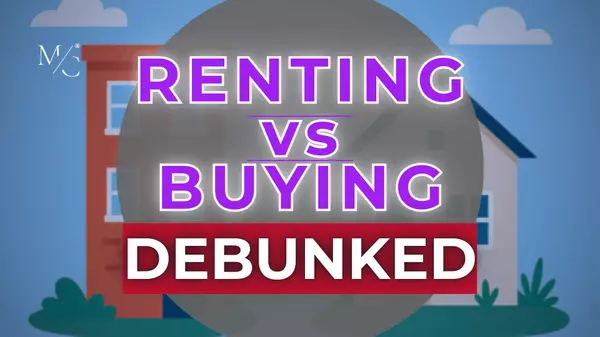How To Save For A House

How To Save For A House:
The Ultimate Guide to Smart Savings
Buying a house is one of the most significant financial decisions you'll ever make. It's not just about finding a place to live; it's a crucial investment in your future. However, saving for a home can seem overwhelming, especially with rising real estate prices and increasing living costs. Fortunately, with the right strategies and a clear plan, you can confidently move toward achieving your dream of homeownership.
This comprehensive guide will help you navigate through the steps to effectively save for your future home, from setting realistic goals to managing your expenses wisely.
Preparing Yourself for Homeownership
Before diving into saving strategies, it's essential to prepare yourself mentally and emotionally for homeownership. Owning a home comes with responsibilities beyond the monthly mortgage payments. You'll need to factor in additional costs like maintenance, property taxes, insurance, and emergency repairs.
Educate yourself about the home-buying process by:
- Reading books or online resources about buying and owning property.
- Attending first-time homebuyer workshops or webinars.
- Consulting with a professional realtor or financial advisor.
Understanding what's involved will help you stay motivated and prepared throughout your home-saving journey.
Establishing Clear and Realistic Savings Goals
Creating a clear savings goal is critical. Your first step is determining how much money you’ll need for a down payment. Typically, down payments range between 3% and 20% of the purchase price, depending on your financing option and desired home.
Here's how to set an achievable goal:
- Research home prices in your target area to get an accurate picture of current market conditions.
- Decide on your down payment percentage based on what you can realistically afford.
- Calculate the total amount needed and set a timeline for achieving it.
For example, if you plan to save $40,000 over four years, you need to save approximately $833 each month. Breaking down your savings goal into manageable monthly targets helps keep you motivated and on track.
Gathering and Evaluating Your Expenses
One crucial but often overlooked step is clearly understanding your current expenses. Before you set a firm monthly savings goal, gather all your financial statements and identify your spending habits:
- Fixed Expenses: Rent, utilities, car payments, insurance, and subscriptions.
- Variable Expenses: Groceries, dining out, entertainment, and shopping.
Tracking your expenses for at least one month can reveal opportunities to cut back. Once you've clearly outlined your expenses, you'll see exactly how much money you can realistically allocate toward your house savings each month.
Creating and Managing a Budget
Budgeting is essential for successful savings. By setting and following a budget, you'll control your spending, prioritize saving, and quickly notice if you're overspending.
Follow these budgeting tips:
- Use budgeting apps or spreadsheets to keep track of your money.
- Separate your spending into categories like necessities and discretionary items.
- Regularly review your budget to find opportunities to save more.
Redirect money saved from reduced discretionary spending into your house savings account to accelerate your goal.
Finding Additional Income Sources
Boost your savings rate by increasing your income. Even small amounts of additional income can significantly speed up your savings timeline.
Here are some practical ways to earn extra money:
- Freelancing: Offer your skills (writing, graphic design, photography, etc.) through freelance marketplaces.
- Part-Time Jobs: Work in retail, food service, or other part-time positions during your off-hours.
- Gig Economy Opportunities: Drive for rideshare apps, deliver groceries, or complete tasks via platforms like Uber, DoorDash, or TaskRabbit.
- Selling Items: Sell unused or gently used items online via marketplaces like eBay, Facebook Marketplace, or Craigslist.
Every additional dollar earned puts you closer to your homeownership goal.
Consistency, Discipline, and Flexibility
Consistency is the cornerstone to successfully saving. Establish good habits, such as setting up automatic transfers from your checking account to your dedicated savings account each payday. This ensures you're consistently saving before spending elsewhere.
Review your progress monthly or quarterly to stay disciplined. Celebrate small milestones, like reaching 25% of your savings goal or successfully cutting back on unnecessary expenses. Recognizing these achievements helps maintain motivation.
Remember, life can be unpredictable, and unexpected expenses might arise. Be prepared to adjust your budget or timeline if necessary, but stay committed to your goal.
How I Can Help You Achieve Homeownership
Navigating the journey to homeownership can feel challenging, but you don't have to do it alone. As your dedicated real estate professional, I can help you:
- Create a personalized savings plan based on your financial situation.
- Provide insights into the local housing market and advise on realistic savings goals.
- Connect you with trusted financial experts and mortgage professionals who can help clarify your home-buying options.
- Guide you through the home-buying process step-by-step, making it smooth and stress-free.
Together, we'll turn your dream of homeownership into a concrete, achievable plan.
Ready to Get Started?
Contact me today, and let's begin your journey toward buying the home you've always dreamed of!
Recent Posts










GET MORE INFORMATION


